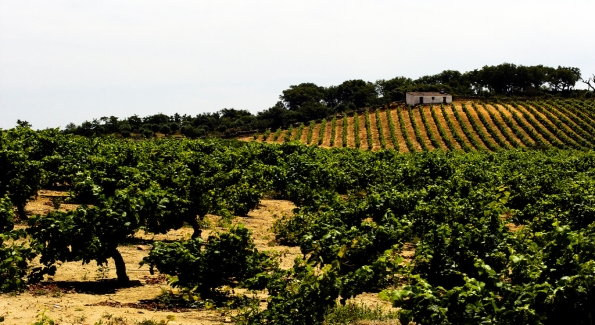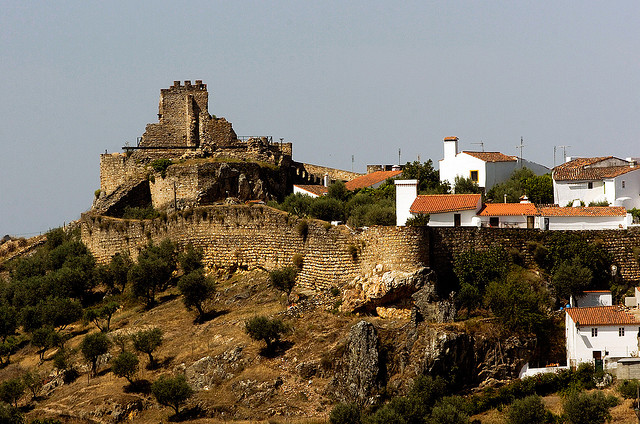Grape names mostly unknown to American ears and palates are producing unforgettable wines in southern Portugal.
By Kelly A. Magyarics
Sure, Portugal is becoming known for more than just its fortified wines. That crisp summertime favorite Vinho Verde comes to mind, as well as some great inexpensive red blends from the Douro region produced from the same grapes as Port. But another noteworthy Portuguese wine region exists, one that’s been making wine for a long time but has fallen under the radar until recently. The wines coming out of Alentejo (pronunciation guide here) in south-central Portugal are terroir-driven, with intense aromas and flavors, refreshing acidity and food friendly.
Last week, I attended a tasting sponsored by the Wines of Alentejo at the residence of the Portuguese Ambassador, His Excellency João de Vallera. Also in attendance was Rui Falcão, one of the most important wine critics in Portugal, who provided the history and an overview of the region. DC-based Master of Wine Jay Youmans guided us through the evening’s twelve whites and reds. And José Avillez, a Portuguese Michelin starred-chef, provided thoughtful, traditional pairings. DC-based wine writers, distributors, importers and wine directors sampled some of the best offerings coming out of the area.
Since Alentejo is in the southern part of Portugal, it has more of an Atlantic climate than a Mediterranean one. That translates to cool summers and mild winters—and resulting wines that are not overly ripe or jammy, retaining their acidity and freshness, and rendering them fabulous with food. The region is sparsely populated, peppered with the whitewashed architecture that speaks to a need of the locals to keep everything clean and unmarred. Here, the traditional mingles with the modern: some wineries employ foot trodding to crush the grapes, while others use presses; producers exist who have been making wine both before and after the government told them to stop, along with new operations that have sprung up several years ago and are waiting for their first harvest. Most operations are small, some do not export, but many do—making them a terrific find for wine lovers looking for something different. Organic farming is a trend, and even those who don’t purposefully practice it rarely use more than the minimum amount of treatments or pesticides.
So what about the grapes? Blends of anywhere from two to twenty-seven grapes are the norm in Alentejo. “The whole is better than the sum of its parts,” explains Falcão. Field blends are also common, where a variety of grapes are planted in a single parcel, picked and vinified together—kind of like winemaking potluck or roulette. On the white side, two grapes dominate. Antão Vaz is perfumed, well structured, and full-bodied, with Mandarin orange and tropical fruit aromas—akin to a cross between Viognier and a warm weather Chardonnay. Arinto is crisper and fresher, with green apple, lemon and lime, minerality and great acidity—similar to Sauvignon Blanc.
For reds, three grapes reign in blends. Aragonez (called Tempranillo in Spain,) produces lively, deep wines with elegance, strength and red fruit spice. Trincadeira is more aromatic, with floral notes that can verge on the vegetal if underripe. Alicante Bouschet, a cross between Grenache and Petit Bouschet, gives wines gumption: a tannic backbone, color and alcohol, along with aromas of forest berries, plums and olives.
Here are some of the highlights from the evening, along with Chef’s food pairings. (I do have to give major props to Chef Avillez by the way, who had shipped most of the ingredients for the cuisine for that evening from Portugal, only to arrive in DC two days before the event to discover that the food was stuck in customs awaiting the necessary permits. He took a trip to the Georgetown Whole Foods on the day of the event to replace what he needed, and his dishes were stellar.) These and other Alentejo wines are available in the DC area:
2009 Paulo Laureano Reserve DOC Alentejo Bianco: This Antão Vaz-based wine has fresh aromas of tropical fruit, nectarine and peach. It’s bright and crisp, with lively acidity, similar to a warm weather Chardonnay without an overuse of oak.
**Chef paired this with Sautéed Scallops, Mushrooms, Pineapple and Aromatic Herbs. The tropical notes of the wine pairing nicely with the diced pineapple in the dish, and the line of acidity cut through the rich scallops.
2008 Pêra Manca DOC Alentejo-Evora Vinho Bianco: A blend of Antão Vaz and Arinto, the wine has subtle aromas of green apple and citrus. Fresh yet weighty, complex yet balanced, this is an iconic wine in Brazil. Youmans mentioned that it could easily hold its own in a blind tasting of white Burgundies.
**Chef paired this with “Bachalhau à Brás”(Codfish in Brás’s Way), reconstituted dried codfish served with fried potato, onion, egg and a spherification of olive. The freshness of the wine foils the salty fish and richness of the dish.
2008 Adega Co-op, Borba Reserva: A dark ruby-hued red blend of Trincadeira, Aragones, Castelão and Alicante Bouschet, the wine has a nose of strawberries, a bit of earthiness like mushrooms and wet leaves, and herbs. It’s medium-bodied, soft, with juicy fruit and a relatively soft finish.
2006 Herdade Perdigão Reserva Vinho IGP: This is a blend of mainly Trincadeira,with some Aragones and Cabernet Sauvignon blended in. The nose is complex, with more secondary/tertiary aromas like smokiness and aged meat than primary fruit. Full of texture on the palate, with tobacco, dark chocolate, smoke and spice, along with attractive acidity.
**Chef served Stuffed Tomatoes with Alheira (Sausage) and Sprouts. The smokiness of the wine was a great match for that of the wine.
Kelly Magyarics is a wine and spirits writer, and wine educator, in the Washington, DC area. She can be reached through her website, www.kellymagyarics.com or on www.twitter.com/kmagyarics.


